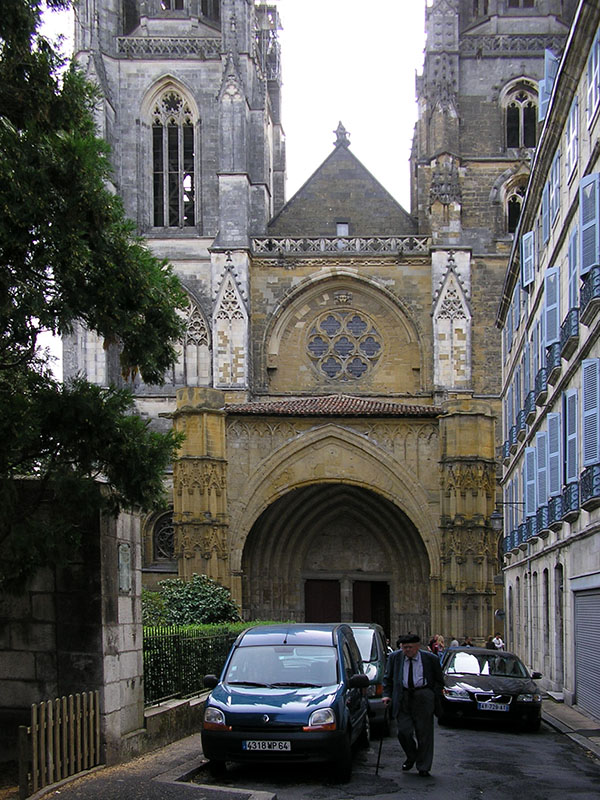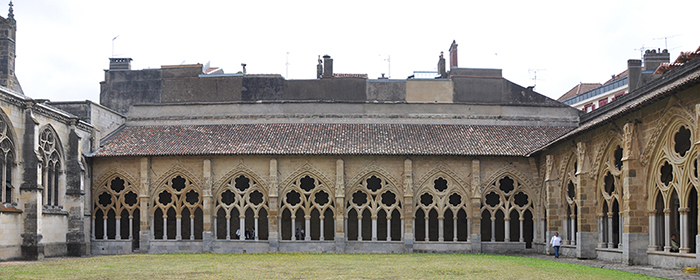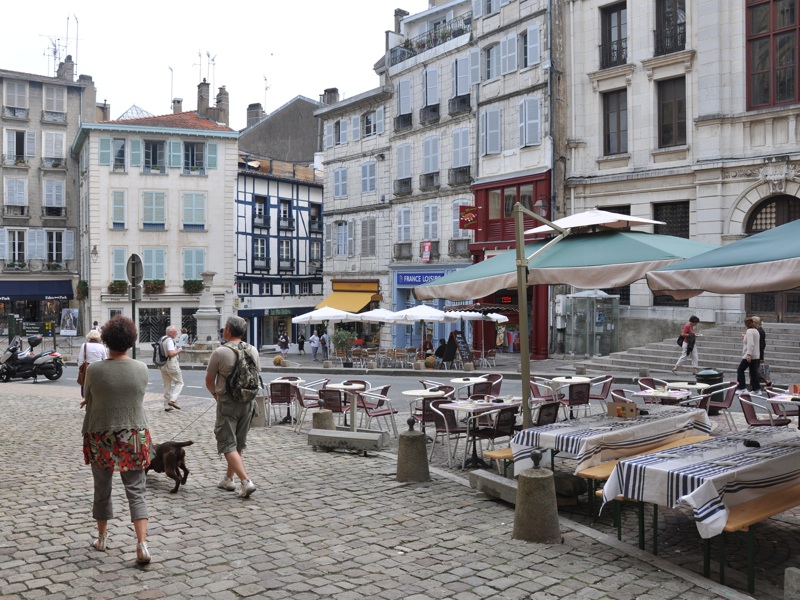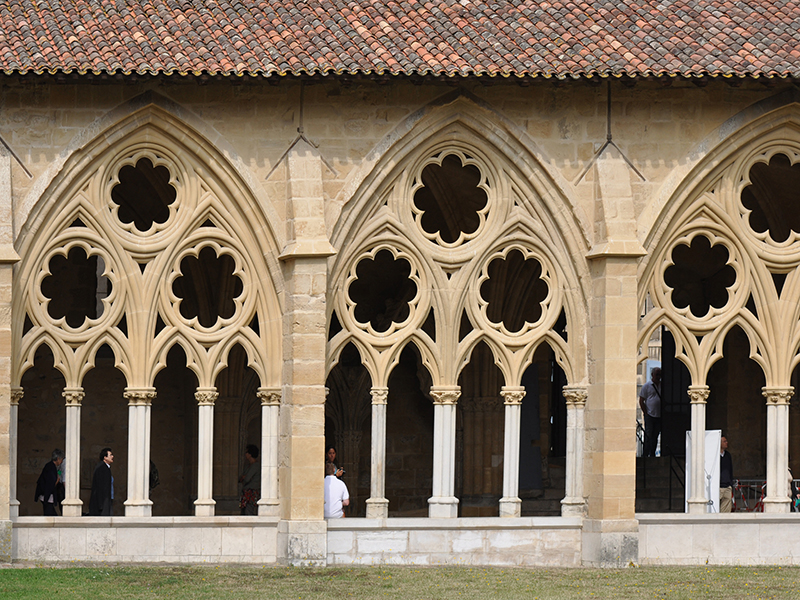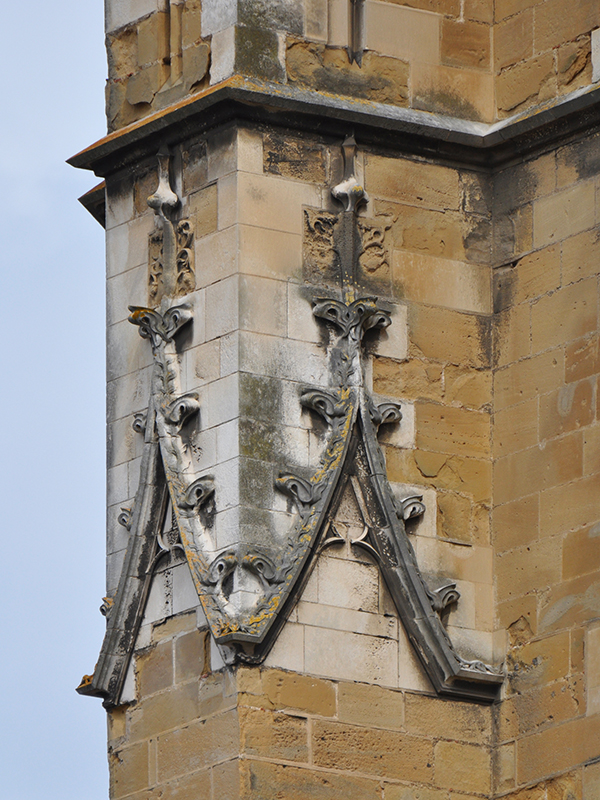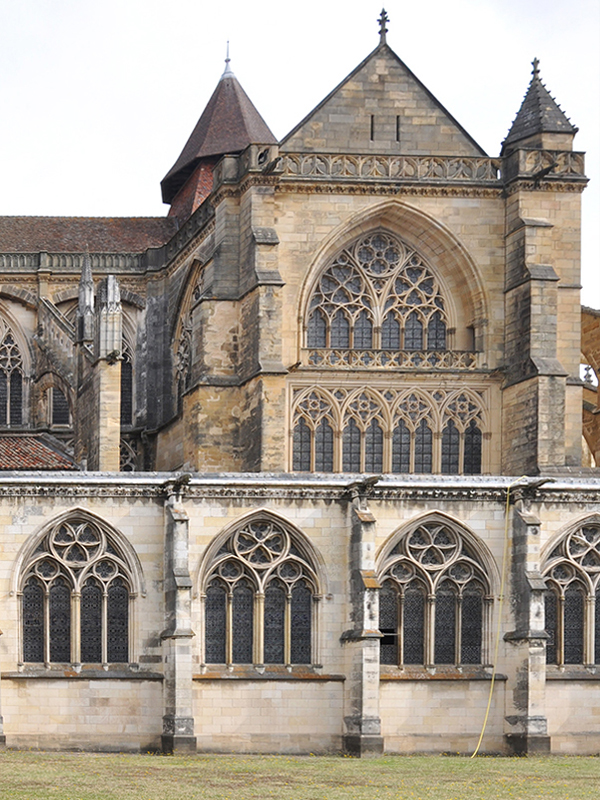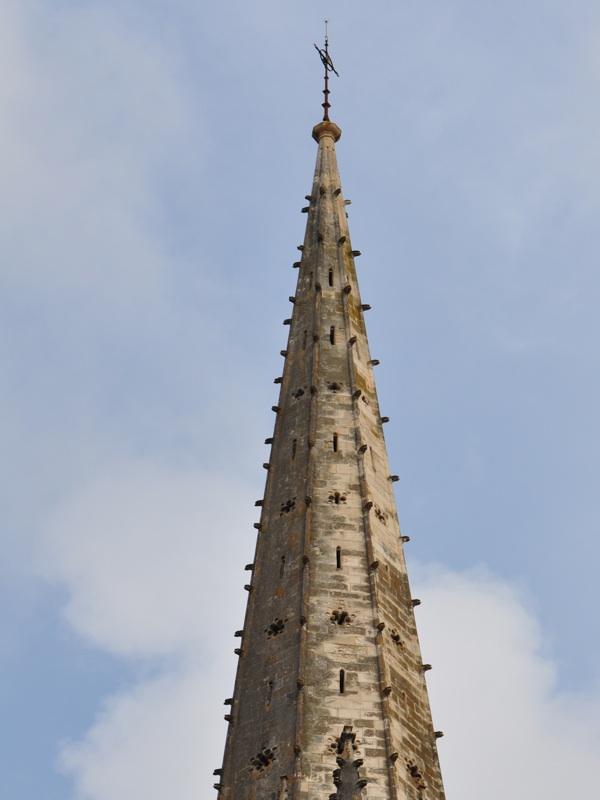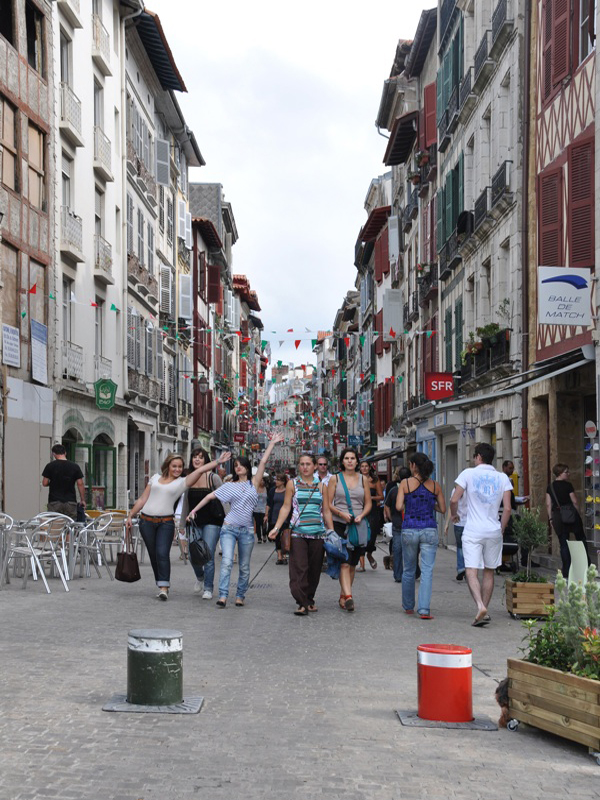Photo gellery
 and Biarritz
and Biarritz  , a famous seaside tourist resort on the coast, and two other communes, formed an urban area called until 2010 Communauté d'agglomération de Bayonne- Anglet-Biarritz (BAB), later Agglomération Côte Basque-Adour (from the name of the river Adour
, a famous seaside tourist resort on the coast, and two other communes, formed an urban area called until 2010 Communauté d'agglomération de Bayonne- Anglet-Biarritz (BAB), later Agglomération Côte Basque-Adour (from the name of the river Adour  ). It is now a part of the so-called Communauté d'agglomération du Pays Basque (➤
map)(➤ map)
). It is now a part of the so-called Communauté d'agglomération du Pays Basque (➤
map)(➤ map)In the 3rd century, the area of today's Bayonne was the site of a Roman military camp called Lapurdum. In the 9th century, the Vikings arrived here, conquered the region and built a port. From 1151 to the mid-15th century, the entire region of Aquitaine was subject to the kings of England; at the end of the Hundred Years' War, it was captured by the French king, Charles VII. In the 16th century, after a period when Bayonne was landlocked due to the change in the natural course of the Adour River, a canal was dug on the river, thanks to which the city regained its importance as a strategic port near the Spanish border. In the 17th century, Vauban built a citadel in Bayonne and surrounded the city with defensive walls, which played an important role in, among others, during the Napoleonic Wars.
In the 19th century, Bayonne lost some of its importance, but remained an important commercial center; it also became a center of the armaments industry (the French name of the bayonet - baïonnette comes from the city's name). It also remained one of the outstanding centers of chocolate production - this skill was brought to the city by Jews fleeing from Spain from the persecution of the Inquisition since the mid-sixteenth century (apart from chocolate, Bayonne's famous specialty is ham). Bayonne was also a destination for Basque refugees from Spain, repressed by the regime of General Franco, in the 20th century, and remains one of the most important centers of Basque regionalism - clearly visible even today in the language used by some of the city's inhabitants on a daily basis, in the inscriptions on the walls, flags and shutters of houses decorated in national colors - red and green.
 and its tributary - the Nive
and its tributary - the Nive  . Place de la Liberte
. Place de la Liberte  , with the town hall next to it, is considered to be the center of the city, located just at the mouth of the Nive into the Adour. Saint-Esprit Bridge
, with the town hall next to it, is considered to be the center of the city, located just at the mouth of the Nive into the Adour. Saint-Esprit Bridge  leads to the right bank of the Adour, where the suburb of Saint-Esprit is located, with the train station and the citadel
leads to the right bank of the Adour, where the suburb of Saint-Esprit is located, with the train station and the citadel (not available to tourists).
(not available to tourists).The Nide River divides Bayonne into two parts - Le Grand Bayonne and Le Petit Bayonne, connected by five bridges; both parts are surrounded by well-preserved ramparts with huge bastions: Le Grand Bayonne to the west and south, Le Petit Bayonne to the south and east. On the left bank of the Adour - within Le Grand Bayonne - the main monument is the cathedral
 ; part of the streets around the cathedral are closed to car traffic. The right bank of the Nive is Le Petit Bayonne. While there, it is worth remembering about two museums - Musée Bonnat
; part of the streets around the cathedral are closed to car traffic. The right bank of the Nive is Le Petit Bayonne. While there, it is worth remembering about two museums - Musée Bonnat  (5, rue Jacques Lafitte), named after Léon Bonnat (1833-1922), Bayonne-born painter and collector, with one of the best collections of paintings in south-western France (including Sandro Botticelli, El Greco, Francisco Goya, Edgar Degas), and a very interesting Basque Museum (Musée Basque
(5, rue Jacques Lafitte), named after Léon Bonnat (1833-1922), Bayonne-born painter and collector, with one of the best collections of paintings in south-western France (including Sandro Botticelli, El Greco, Francisco Goya, Edgar Degas), and a very interesting Basque Museum (Musée Basque  , 37 quai des Corsaires), an ethnographic museum dedicated to the Basques and the Basque Country, opened in 1922.
, 37 quai des Corsaires), an ethnographic museum dedicated to the Basques and the Basque Country, opened in 1922.The Late Gothic Cathedral of Bayonne
 (Cathédrale Sainte-Marie de Bayonne), with two 80 m high towers in the western façade, considered the main monument of the city, was built in the years 1213-1544 (although its northern tower was added only in the 19th century). Initially built during the reign of the English kings, it was partly modeled on the cathedrals in Champagne. It has three naves; from both sides, south and north, chapels were added to it in different periods. Particularly interesting are the cloisters (adjacent to the cathedral from the south (entrance from Place Pasteur), dating from the 14th century (according to some sources to the 13th century). It is worth paying attention to the double portal in the sacristy from the 13th century and the stained glass windows in the nave and in chapels (17th century).
(Cathédrale Sainte-Marie de Bayonne), with two 80 m high towers in the western façade, considered the main monument of the city, was built in the years 1213-1544 (although its northern tower was added only in the 19th century). Initially built during the reign of the English kings, it was partly modeled on the cathedrals in Champagne. It has three naves; from both sides, south and north, chapels were added to it in different periods. Particularly interesting are the cloisters (adjacent to the cathedral from the south (entrance from Place Pasteur), dating from the 14th century (according to some sources to the 13th century). It is worth paying attention to the double portal in the sacristy from the 13th century and the stained glass windows in the nave and in chapels (17th century).